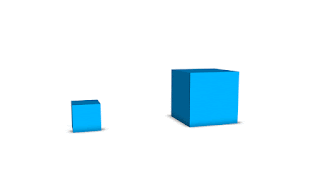Internet! You’re back! That’s terrific because I wanted to talk to you about critique!
Sweet! Why?
One of the the most valuable, yet most devastating aspects of being a professional creative is giving and getting critiques of your work.
You don’t say.
I do say. First, let’s talk about getting critique, as it can be a pretty horrifying experience. In fact, we can basically use the 5 stages of grief to get through it. That might sound extreme, but the truth is critique can be seen as the death of an idea. The trick is learning to get through that process and come out stronger on the other side.
So...I assume you’re going to tell me about the stages right?
Actually I wasn’t, but that seems like a good idea. Let’s do it.
Denial
“You just don’t understand what I’m going for.” “This is how it looked in my reference.”
The usual lines we regret uttering after we realize it’s nonsense. Yes, animation is subjective but when you’re working in games or film, you’re not just animating for yourself. Look at the big picture dum dum! Embrace, don’t deny!
Anger
“Uggh! Why didn’t they tell me this sooner?” “ They still don’t know what I was going for!”
This is the part where you’re starting to realize you’ve lost the fight. You feel like the room has turned against you and the barrage of feedback is coming fast and strong. The best thing to do at this point is to frame the feedback you’re getting. Restate the goal of your piece and don’t let the feedback go off the rails.
Bargaining
“But this pose still works right?” “The timing is still working though….no?
This is the part of a critique where even you start to acknowledge something is wrong. Really dig into the feedback here and get clarity where there is none. Found out what about your work is helping you achieve your goal and what isn’t.
Depression
“I wasted so much time!” “I’m a terrible animator.” I don’t know what to do.”
This is the ‘hell on earth’ portion of critique. You know people are right. You know your animation isn’t working but you also haven’t really figured out how to move on. Instead, you just sit there lamenting what could have been. This is the worst. At this point, it’s best to make sure you’ve heard and understood the feedback. Stay focused on the goal and restate the feedback as a plan of action.
Acceptance
“I see what you guys were saying!” “Oh man, I have an even better idea!” “You guys might actually know what you are talking about...occasionally.”
This is the breakthrough! You’ve found a way to move past defeat and start anew. Full redo? Sure! No problem! Ideally you’ve reached this point knowing more than you did before with a clear vision of what to do next. This can be a high point in the creative process. Newfound knowledge and enthusiasm for the same task/idea. Winning!
Acceptance seems like a good step. How can I just live in acceptance?
Unfortunately, I don’t think you can or should live there. If no critique ever made you want to push back a little, you probably weren’t very committed to the idea in the first place.
So what can I do? How can I make this suck less?
Surviving this process is about being aware of the steps as you work your way through them. Get the most out of each phase so the pain is worth it. Here are some things to keep in mind while getting a critique that can help guide your path to the awesome work on the other side.
Now that we know and can ‘accept’ that our beloved ideas will die, how do we carry that knowledge to the other side of the process? How do we help others journey through the 5 stages in a compassionate and effective way?
I don’t know. I didn’t come prepared to answer that question. Should I have?
No, that’s why I’m here! I’ll show you the way!!
First of all remember that creatives are pouring a lot of themselves into their work so any critique of said work can be seen as a critique of the person. Please be compassionate or just ‘don’t be a dick’. Either works.
Second, make sure you understand the intention of the piece. It doesn’t do anyone any good to assume you understand what they were going for. Find out for sure. What goals are they trying to accomplish?
Third, target your critique based on the intention of the piece with focused and precise feedback. Don't be that person who says "I don't like it" or "meh". Be clear! "You're timing isn't working because..." "The pose on frame 37 isn't selling your design goal for this reason..." Don't be lazy, be helpful!!
Lastly, look for ways to fix or improve an idea before inserting your own. We all enjoy being creative and like to think about how we’d approach a shot but throwing a new idea into the mix doesn’t help the person trying to finish a task. Give the first idea a genuine chance before changing it wholesale or encouraging a redo.
Cool. But what if I wasn’t listening just now?
That’s unfortunate but the short version is this:
I knew that. I just wanted to make sure you knew what you said.
You’re a real buddy. Hope that helps Internet. Let me know if you have any questions in the comment section. Until next time!
Huzzah!












